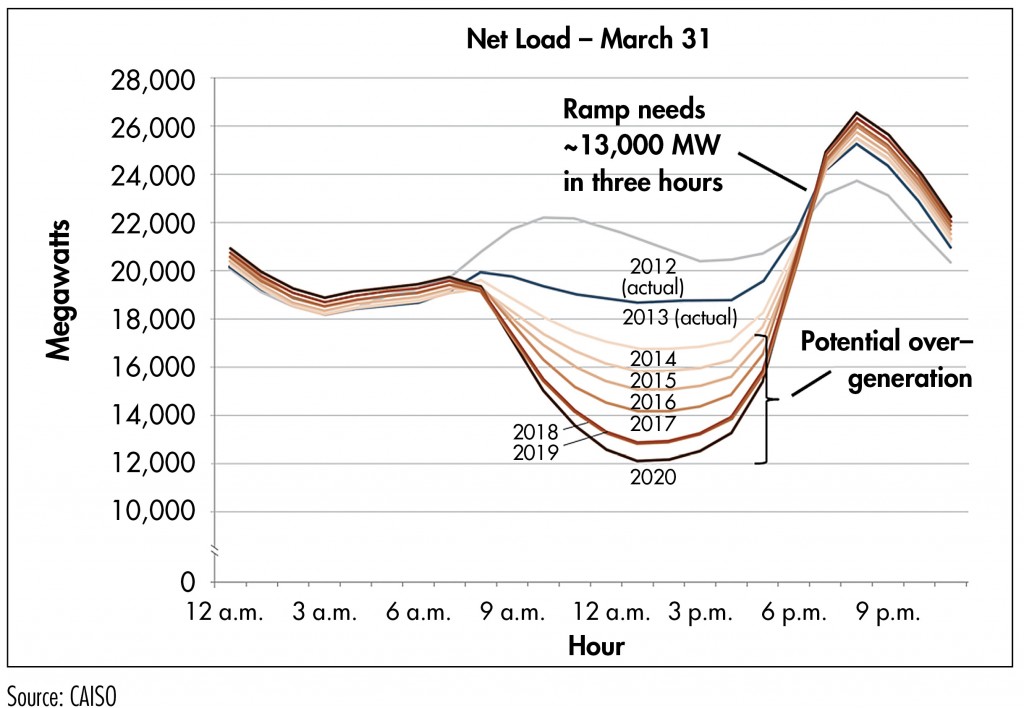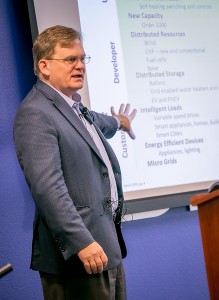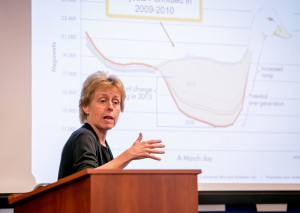The energy sector is changing at a rapid pace, and with these changes come an assortment of new and unique competitive challenges that have the potential to seriously impact IBEW 1245 members and their jobs.
As part of Local 1245’s ongoing effort to keep members abreast of these changes, the union hosted a special two-day seminar that detailed the most significant competitive challenges confronting our members, including Renewable Portfolio Standards, net energy metering, microgrids, technological advancements, the future of gas and coal, threats to the Diablo Canyon nuclear power plant, battery storage, public-private partnerships, and changes to energy regulations, including deregulation efforts in Nevada and regulation reform in New York state.
More than two dozen members came together at Weakley Hall to learn about the full gamut of issues, listen to a panel of expert speakers, asked questions, and come up with suggested plans for action.
Change is Inevitable
Labor Attorney Marc Joseph kicked off the seminar with a detailed discussion about the market forces that are seeking to undermine the vertically-integrated, full-service utility model. Joseph has represented Local 1245 and other IBEW locals for more than 20 years, and is perhaps one of the most knowledgeable thought leaders on the topic of utility market changes.
“We are in a time of unprecedented challenge to jobs of every member of IBEW Local 1245. The challenge didn’t start yesterday, and it won’t be resolved tomorrow. The threat is part of a series of events, with several key moments,” said Joseph. “Change is inevitable, but change that is damaging to the IBEW is not inevitable.”
Joseph reviewed the 40-year history of energy deregulation, and how it has affected the generation, and then the transmission, and now the distribution of power. Factors like direct access and Community Choice Aggregation, along with third-party developers like SolarCity, are already chipping away at union-provided power distribution, but Joseph explained how the union is taking action, both through legislative advocacy as well as through the PG&E General Rate Case, in order to prevent more deleterious impacts to Local 1245 members and jobs.
The members had some insightful takeaways from Joseph’s presentation.
“Deregulation and solar are not all bad. It’s the current pace of de-regulation that is the problem,” remarked PG&E System Operator Josh Alpine. “It threatens to harm communities, our livelihood. We’re not against renewables, but we need a thoughtful transition.”
Opportunities for Growth
Few people in the utility industry know more about the technological advancements being made to the Grid than Stewart Ramsay. Ramsay is the former Vice President of Asset Management & Electric Transmission at PG&E, and has a wealth of technology expertise that he’s chosen to share with Local 1245.
Ramsay explained how some technological advances, including Intelligent Load Management and Smart Cities, present unique opportunities for growth for both the utility companies and the workforce. He also outlined how utilities can utilize technological advances to adapt different forms of storage, from transmission systems to tanked water heaters, so that they can become more efficient. But California is missing out on some of these opportunities, and instead, we’re seeing a heavily distorted load pattern (known colloquially as the “duck curve”) caused by policies that prioritize developers over customers.
 “If we step back and look at [these technological opportunities] from the interest of the customer, rather than the interest of a particular type of developer, we could come up with a must more holistic, much better solution,” Ramsay continued. “And the utility and its workforce would have a much bigger role than people are anticipating, because it would make sense.”
“If we step back and look at [these technological opportunities] from the interest of the customer, rather than the interest of a particular type of developer, we could come up with a must more holistic, much better solution,” Ramsay continued. “And the utility and its workforce would have a much bigger role than people are anticipating, because it would make sense.”
This notion struck a chord with many of the members, especially those who work at Diablo Canyon Nuclear Power Plant.
“At power plants we hear about the ‘duck curve,’ but it is not set in stone,” said Diablo Canyon Operator Jeremy Winn. “Things can be done. We have the power to have an impact. “
Feeding the Duck
Susan Kennedy, formerly the commissioner of the California Public Utility Commission and now head of a microgrid and battery storage company, delved into more detail about the “duck curve.” She noted that the backward cycle of generation and distribution has resulted in grid instability, and pointed out that the conditions we are seeing today – commodity prices falling, customer rates increasing and over-generation — are precisely the same conditions that preceded the California energy crisis of 1999, and she explained how new policy mandates related to energy storage are continuing to “feed the duck.”
“What happens when you put in place all these policy initiatives but don’t rationalize them to figure out how they fit in a least-cost-best fit — where the utilities don’t have to buy them, but want to buy them because they make sense from a cost-effectiveness standpoint — you have stranded assets, with increasing customer rates, wasted investments in new technology, and higher costs passed on to ratepayers.”
We are on the Same Team
The members who attended the seminar left with a far better understanding of the challenges ahead and what’s at stake, and came up with some insightful solutions to move forward in the right direction.
“While solar is a good thing, we have to let everyone know how it will affect jobs, our communities, our future, the gap between poverty and wealth. Misinformation is a problem we need to combat,” said NV Energy member Michelle Benuzzi. “We need to educate, starting at home, with our kids, our parents and grandparents, the people we work with… and we have to get out there and hold officials to what they promised.”
“The electrical industry is changing, and changing fast. Jobs could in jeopardy. But IBEW 1245 is fighting to keep our jobs,” said PG&E lineman Brian Anderson. “Our members need to understand the impacts of CCAs, PURB 1000, Solar City, battery systems, EVs and the possible closure of Diablo Canyon Power Plant or any plant. We have to embrace new technology. Everyone hates change, but we have to get involved in politics and expand PG&E’s solar choice program. It’s a time where the company and the union have to work together to fight Goldman Sachs, Solar City, and Elon Musk as one. We are on the same team.”
Powerpoint presentations and videos from the seminar can be found online at www.ibew1245.com/competitive-challenges-resources


